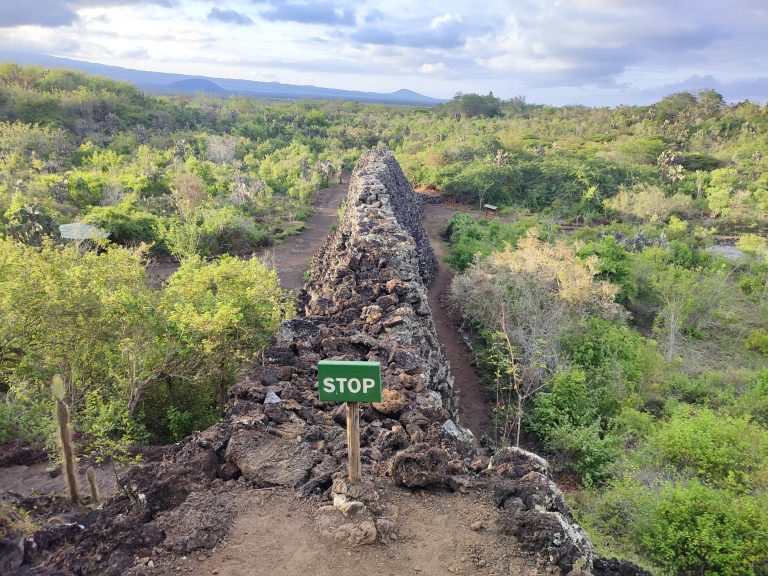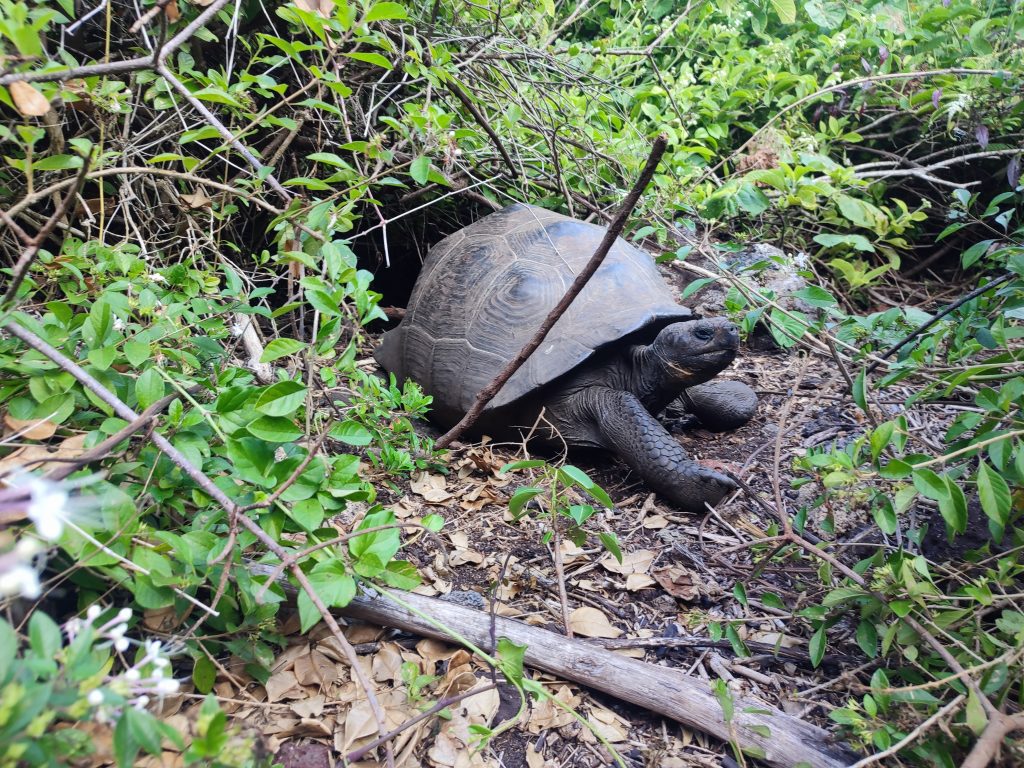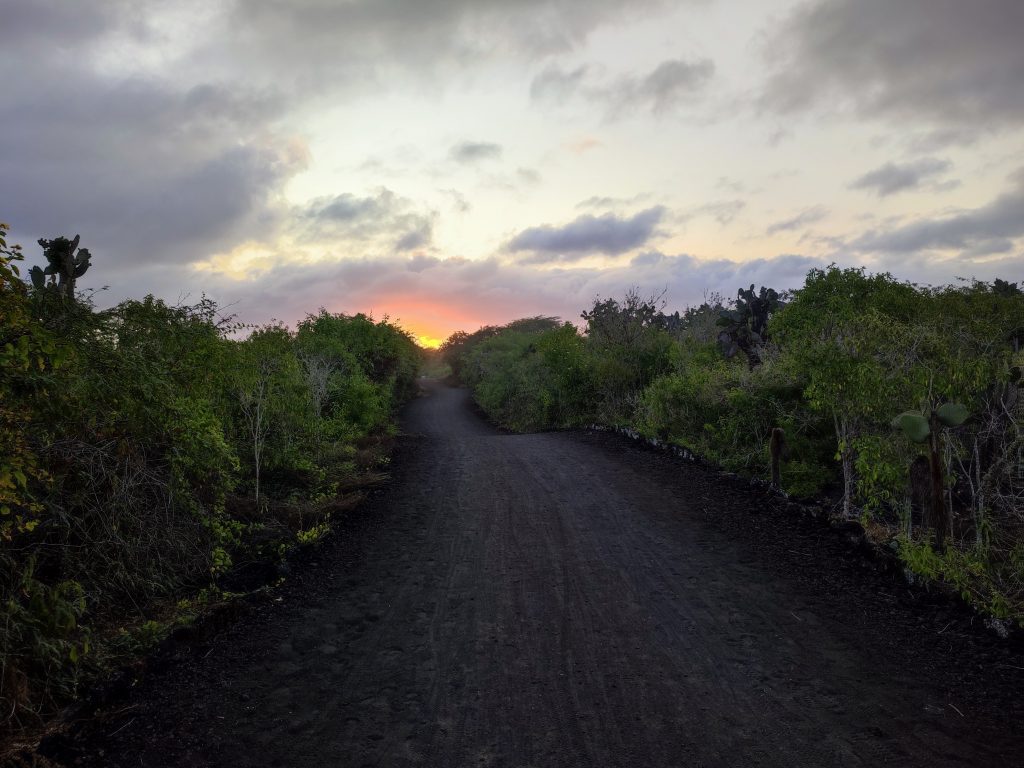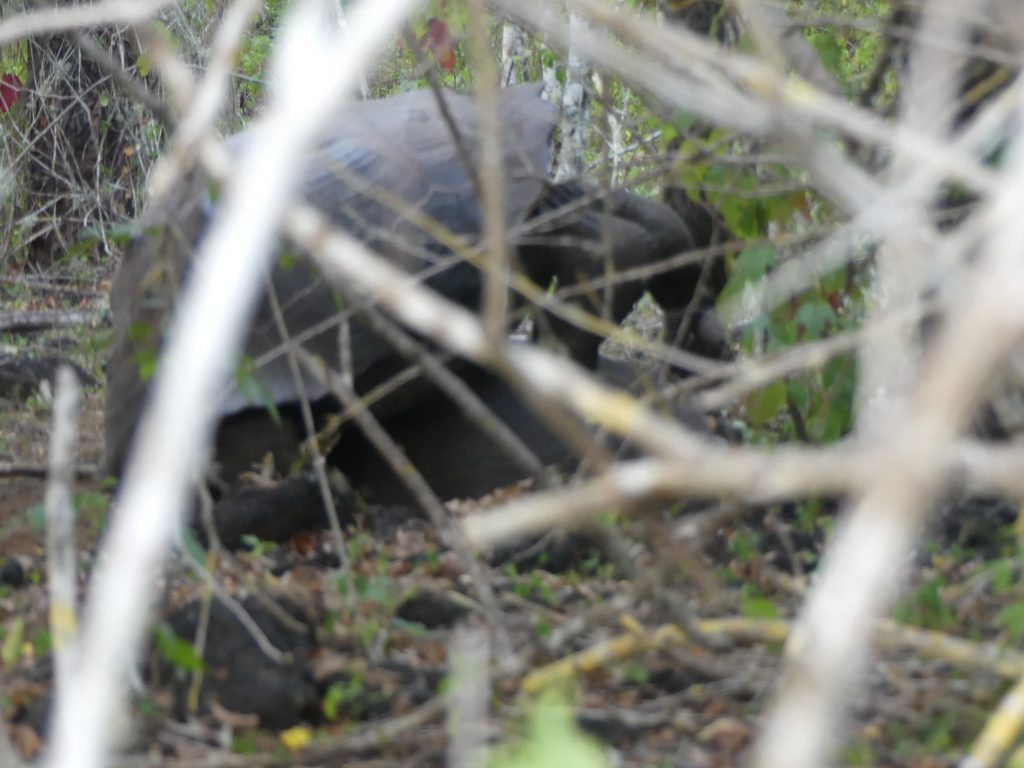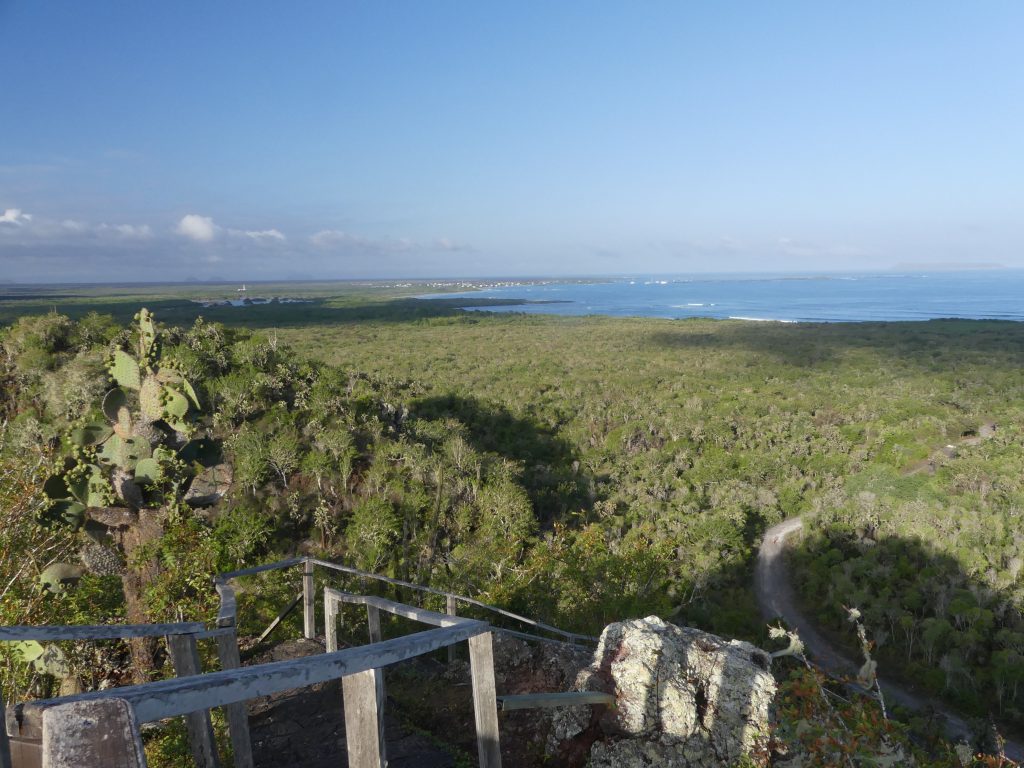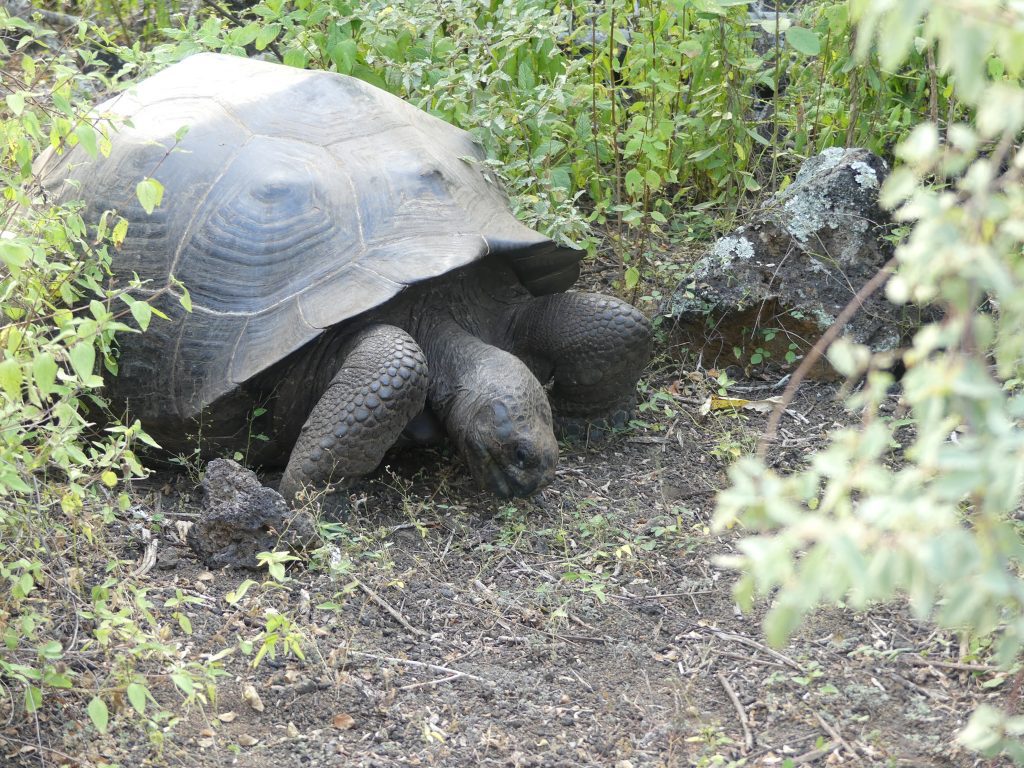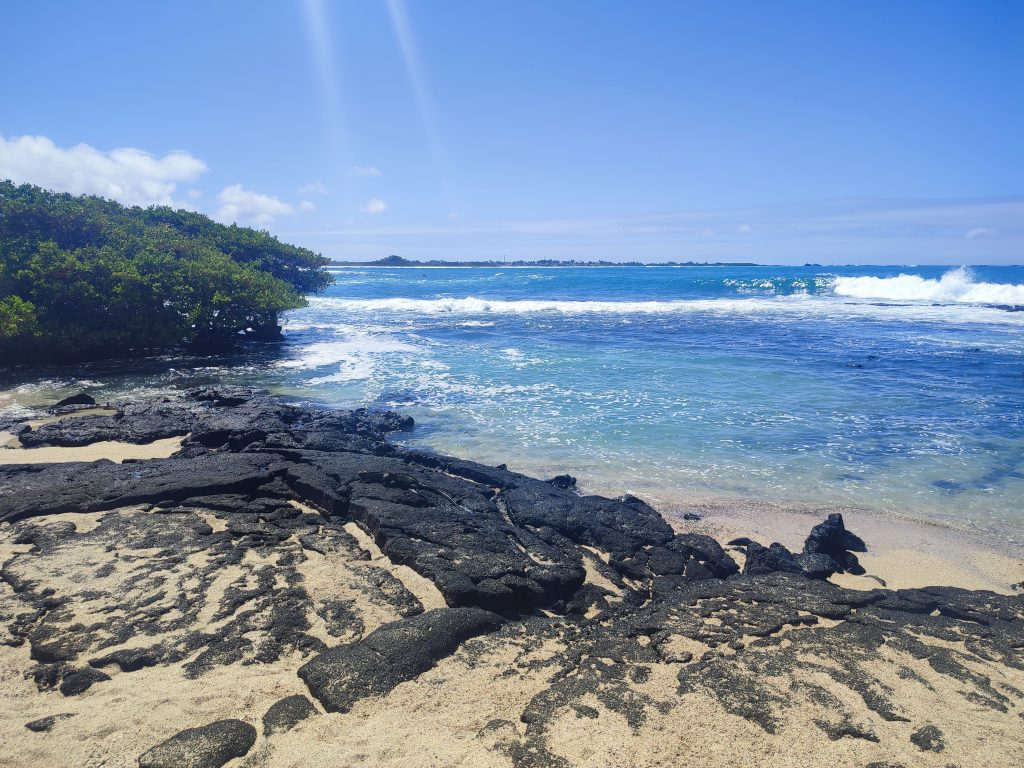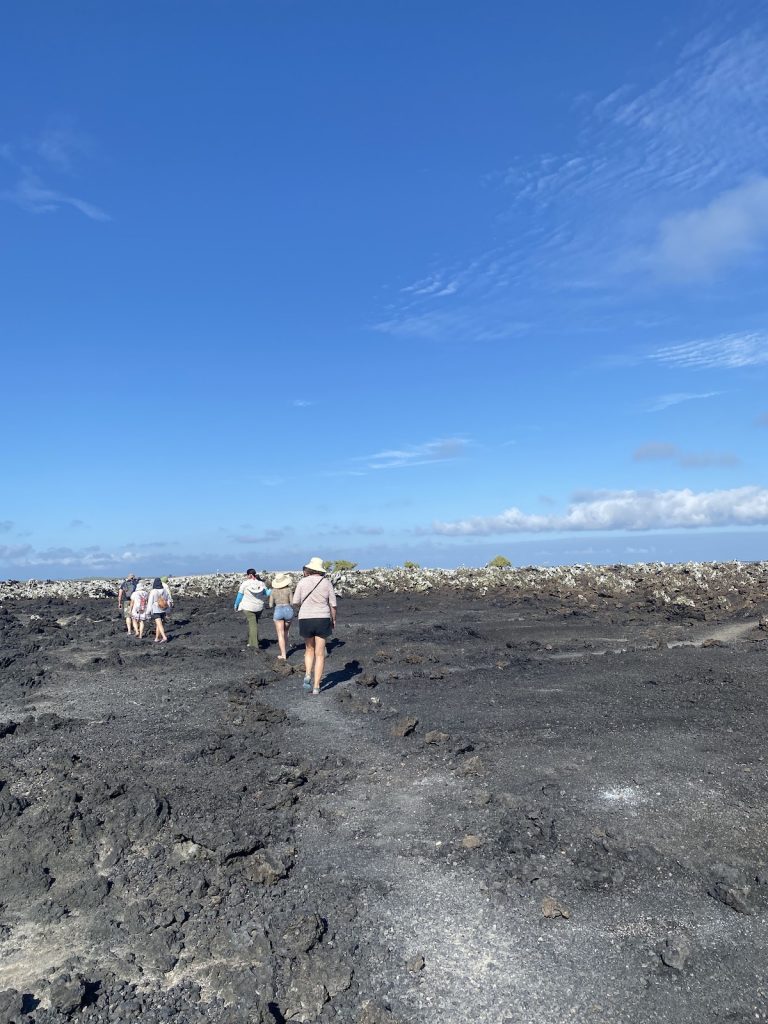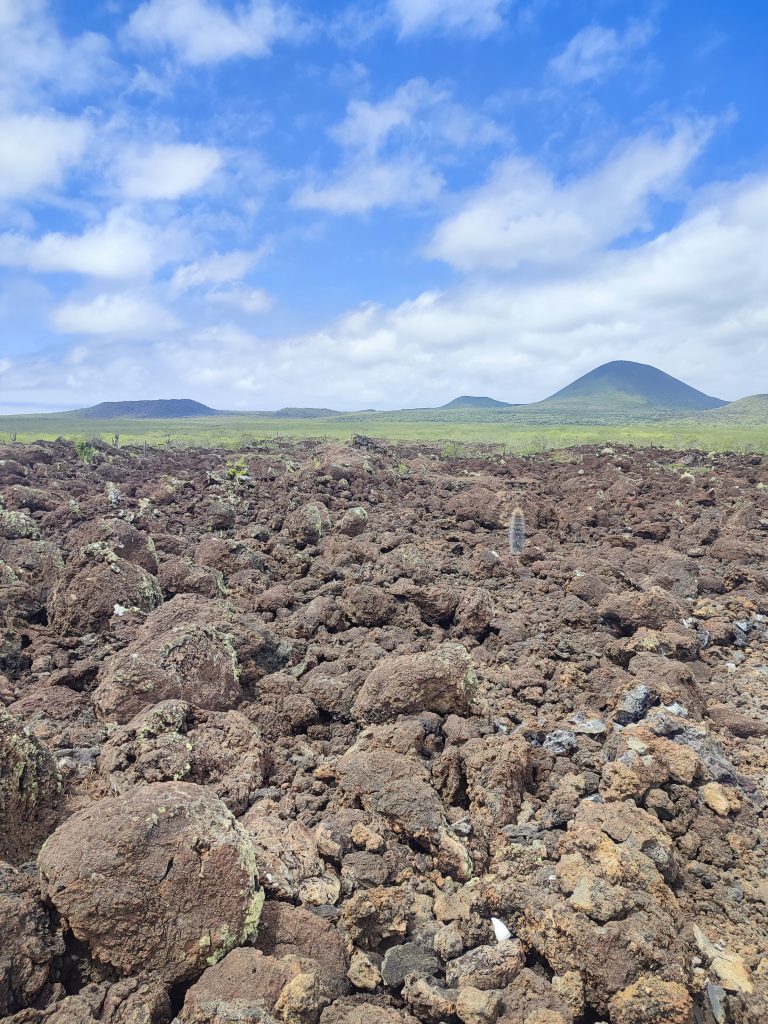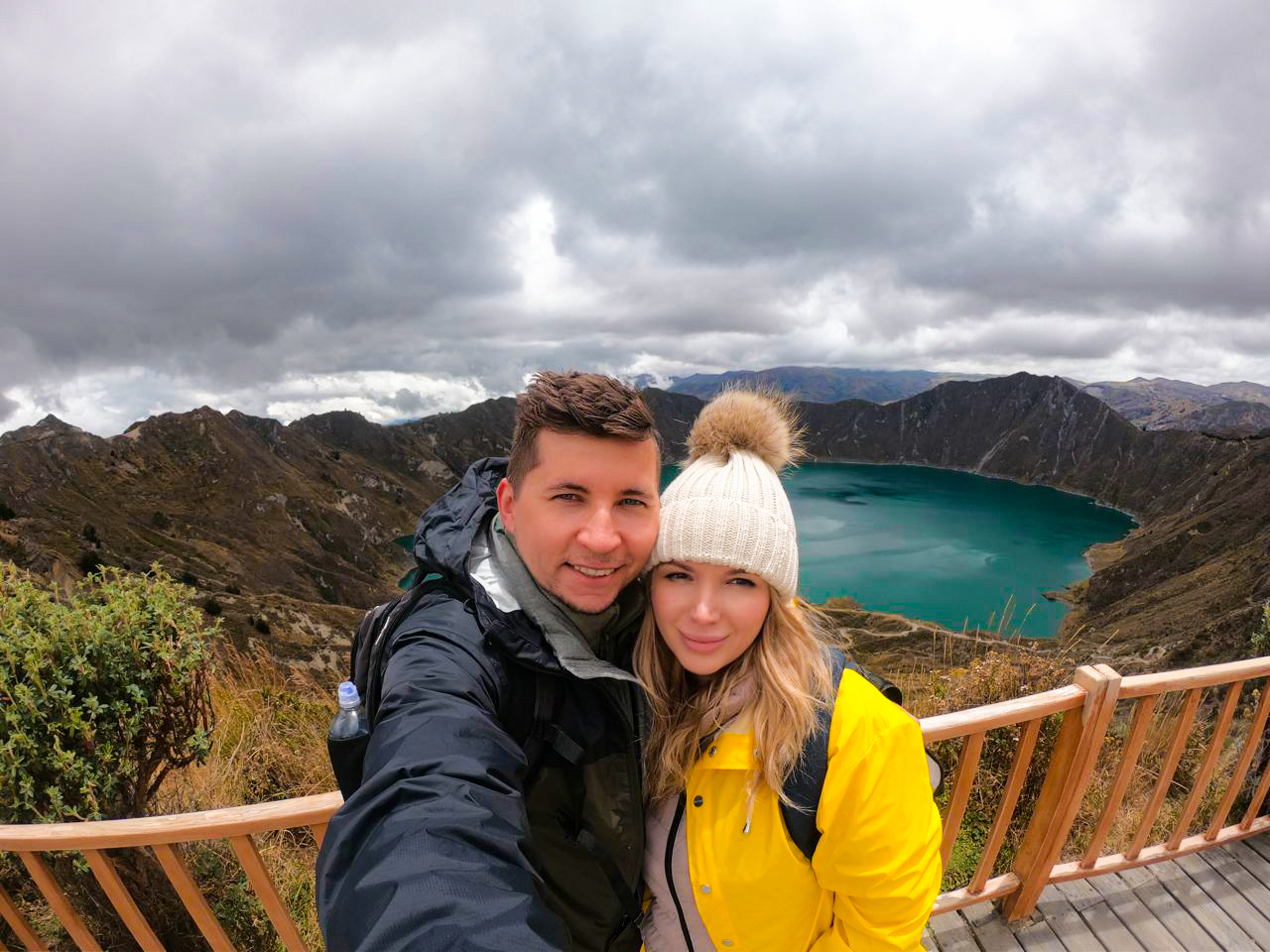The Wall of Tears on Isabela Island is an 8-meter (26 ft) high structure made of stacked stones, stretching over 100 meters (328 ft) through a rugged, arid landscape in the western reaches of this volcanic island.
This wall is a haunting reminder of the island’s somber past, when prisoners from mainland Ecuador were sent to this remote location and forced to labor under the intense tropical sun. Interestingly, it’s also one of the few spots where you can encounter Galapagos tortoises in the wild, making it a unique blend of history and wildlife.
Known locally as El Muro de las Lágrimas, the Wall of Tears is one of the most historically significant sites in the Galapagos Islands. Visiting this site offers a deeper understanding of Isabela Island’s past.
The route to the Wall of Tears is an immersive way to explore Isabela Island. You can experience the rich fauna and tranquility of this unique location at your own pace without a guide. The trail is free and begins on the town’s outskirts, just across from the docks, making it accessible for anyone ready to discover this poignant part of Galapagos history.
Looking back, visiting the Wall of Tears offered more than expected – from historical insights to wild tortoise sightings along the trail. Skip the uncertainty I faced and get a FREE personalized Galapagos trip quote from my trusted local experts who know exactly how to combine historical sites with wildlife encounters. Your booking helps support both this blog and local Galapagos communities.
How to Get to The Wall of Tears
The Wall of Tears is one of the few Galapagos attractions you can visit without a tour guide, making it a great choice for a budget-friendly and flexible adventure.
You can rent a bike from local agencies or hotels in town, and the route takes you along a scenic, rocky sand and gravel path west of Puerto Villamil, following the coastline. The bike ride is about an hour each way, but it’s easy to make a full day of it. Along the way, you’ll find plenty of beautiful stops, from coastal viewpoints to quiet beaches and mangrove forests. Be sure to keep your camera handy—you might just spot a giant tortoise wandering by or catch sight of unique Galapagos birds.
The Wall of Tears has basic tourist information on-site, but for those interested in a deeper understanding, visiting with a tour guide can add valuable context.
This historical site can be easily included in a Galapagos land tour itinerary, and some Galapagos cruises also offer group excursions to the Wall of Tears. Whether on your own or as part of a tour, visiting this landmark provides a meaningful glimpse into the island’s history.
Reaching The Wall of Tears
The Wall of Tears might be just a rugged lava rock wall in the middle of nowhere, but it holds a compelling, somber significance. While it may not be the most thrilling attraction in the Galapagos, we’d say it’s definitely worth a visit.
The out-and-back trail to the Wall of Tears is about 7 miles long, mostly flat, with well-maintained paths and optional side trails for those wanting a bit more adventure. You can either walk or rent a bike in Puerto Villamil. As you leave town, the path becomes more isolated along the coast, adding to the quiet, reflective atmosphere.
Along the way, we encountered several fascinating sights:
- A colorful cemetery tucked off the roadside
- A guard station with restrooms and a check-in point
- Lava tubes that invite exploration, both within and across
- A mangrove zone featuring all four types, including the majestic black mangrove
- A serene estuary filled with intriguing tidepools
- Cerro Orchilla, a climb that rewards you with a sweeping view
As we continued, each stop added a new layer to our journey, with highlights like white-cheeked pintails and black-necked stilts among the waterfowl. Near the end, the final stretch brings you to the Wall of Tears itself, built between 1945 and 1959. The wall looms at about 65 feet tall—stark and imposing, a jarring contrast to the peaceful landscape and a reminder of the hardships endured by prisoners who constructed it.
For those who want to take in a full view, a short climb beyond the wall leads up to the highest point on the trail. Here, past an old WWII radar station, a bench awaits, offering an expansive, million-dollar view that captures the rugged beauty of Isabela Island and offers a moment of quiet reflection.
Wildlife in Wall of Tears
The journey to the Wall of Tears was filled with amazing wildlife encounters, with the highlight being the sight of Galapagos tortoises in their natural habitat. We spotted quite a few along the trail, each sighting adding to the excitement of the adventure.
The beach enclaves along the way were also a haven for marine iguanas basking in the sun, while the skies were filled with various birds, including the distinctive smooth-billed ani catching bees and, of course, the iconic Galapagos finches. We found ourselves constantly on the lookout for lizards darting in and out of the trail, blending seamlessly into the surroundings with their natural camouflage. Each of these encounters made the journey to the Wall of Tears even more memorable.
Trust me, while guided tours are great, self-guided adventures like the Wall of Tears trail show a different side of the Galapagos! Want an expertly planned itinerary that balances guided excursions with independent exploration? Get a FREE quote from my recommended local agency. Your booking supports this blog and local Galapagos businesses.
Travel Tips When Visiting The Wall of Tears
- Although 5km may not appear to be a long bike ride, it does take a respectable degree of fitness to reach the Wall of Tears. Don’t underestimate this excursion because the terrain is rough and the heat can be exhausting.
- Once the sun comes up, temperatures along the shore quickly turn hot and humid, especially during the warm and rainy Galapagos weather season, which lasts from December to May. There is very little shade along the trip or at the venue. It makes sense to avoid going out during the noon heat.
- Strong sun protection is necessary, so bring sunglasses, a hat, and sunscreen. Even on hazy days, skin burns easily in the Galapagos.
- Once you leave town, there are no potable water sources, stores, or cafés. So bring lots of water with you – at least 1-2 liters or more if you want to cycle all day.
- Wear clothing that is light and comfortable.
- Pack energy foods, and don’t forget to bring your camera or cellphone.
- Watch out for potholes and soft sandy parts along the trail, which can make biking difficult at times.
- You’ll also want to stay on the trails since there are lots of thorny cactus and spiky lava rocks that you should avoid.
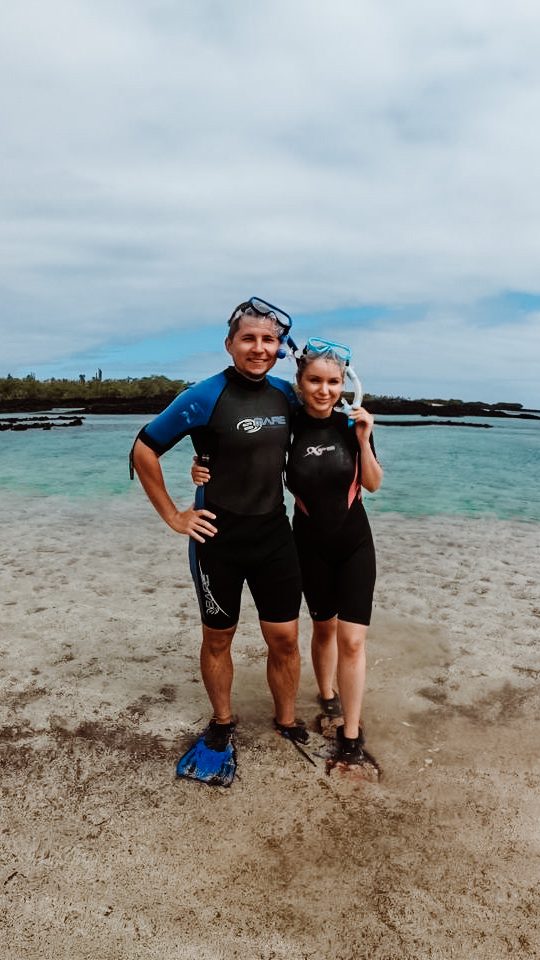
Planning trip to Galapagos Islands?
My wife and I spent two weeks on these magnificent islands, visited nearly every possible tour, and explored as much as we could. I shared all the important details in my comprehensive Galapagos Islands Travel Guide, where I cover everything you need to know about planning a trip to the Galapagos.
Galapagos Islands travel might surprise you with extra fees to enter the islands, the complicated logistics between islands, booking tours, and knowing which spots are free to explore and which ones are not. I’ve covered it all in this Galapagos Travel Guide.
Also, if you’re planning a trip to the Galapagos, make sure to use my link for discounted hotel prices via Booking.com. It really helps support my blog!
Bottom Line
The Wall of Tears isn’t your typical Galapagos attraction. While it may seem like an unfinished lava rock wall, it holds a significant story.
Plan perfect trip to Ecuador & Galapagos
I spent countless hours researching everything about traveling to Ecuador, and I created this blog for fellow travel enthusiasts who want the best, most reliable information. But if you want to save time, we’ve partnered with the top local agency to plan your dream trip.
The Galapagos Islands aren’t only about incredible wildlife; they also carry the history of the early people who lived here long before tourists arrived. Life was grueling for the prisoners on Isabela Island, and the Wall of Tears stands as a testament to their suffering and hardship.
A brief stop here might not be the highlight of your trip, but it offers a powerful perspective and deeper understanding of the human history that shaped the Galapagos.

